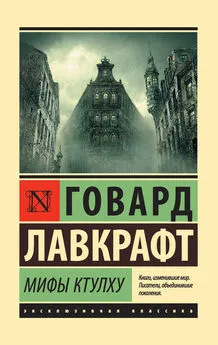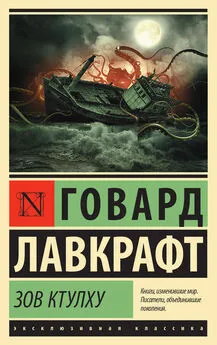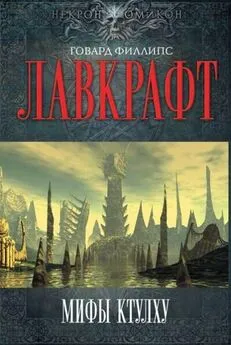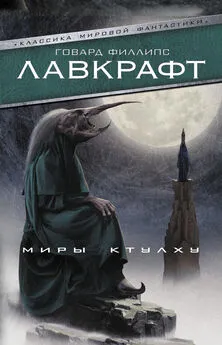Говард Лавкрафт - Зов Ктулху / The Call of Chulhu
- Название:Зов Ктулху / The Call of Chulhu
- Автор:
- Жанр:
- Издательство:АСТ
- Год:2017
- Город:Москва
- ISBN:978-5-17-104404-6
- Рейтинг:
- Избранное:Добавить в избранное
-
Отзывы:
-
Ваша оценка:
Говард Лавкрафт - Зов Ктулху / The Call of Chulhu краткое содержание
Тексты произведений сокращены и адаптированы, снабжены грамматическим комментарием и словарем, в который вошли ВСЕ слова, содержащиеся в текстах. Благодаря этому книга подойдет для любого уровня владения английским языком.
Зов Ктулху / The Call of Chulhu - читать онлайн бесплатно ознакомительный отрывок
Интервал:
Закладка:
This verbal jumble was the key to the recollection which excited and disturbed Professor Angell. He questioned the sculptor with scientific interest; and studied the bas-relief on which the young man had been working, chilled and clad only in his night clothes. My uncle blamed his old age, Wilcox afterwards said, because he could not recognize both hieroglyphics and pictorial design fast enough. Many of his questions seemed highly inappropriate to his visitor, especially those which tried to connect the things with strange cults or societies; and Wilcox could not understand the promises of silence which he was offered in exchange for an admission of membership in some widespread mystical or paganly religious society. When Professor Angell became convinced that the sculptor was indeed ignorant of any cult or system of cryptic lore, he asked his visitor to supply him with future reports of dreams. This bore regular fruit, because after the first interview the manuscript records daily visits of the young man, during which he related startling fragments of nocturnal imagery. He was always talking about some terrible Cyclopean views of dark and dripping stone, with a subterrene voice or intelligence shouting monotonously enigmatical uninscribable gibberish. The two sounds frequently repeated are rendered by the letters “Cthulhu” and “ R’lyeh. [33] R’lyeh – Р’льех
”
On March 23, the manuscript continued, Wilcox did not come; he had been stricken with an obscure fever and taken to the home of his family in Waterman Street. [34] Waterman Street – Уотермен-стрит
He had cried out in the night, arousing several other artists in the building, and had showed since then only alternations of unconsciousness and delirium. My uncle at once telephoned the family, and from that time watched the case; calling often at the Thayer Street office of Dr. Tobey. [35] Thayer Street office of Dr. Tobey – приёмная доктора Тоби на Тейер-стрит
The young man’s febrile mind, apparently, was dwelling on strange things; and the doctor was shuddering as he spoke of them. They included not only a repetition of what he had formerly dreamed, but concerned gigantic things “miles high” which walked or lumbered about. He never fully described these objects but occasional frantic words, as repeated by Dr. Tobey, convinced the professor that they were identical with the nameless monsters he had depicted in his dream-sculpture. Reference to this object, the doctor added, was invariably a prelude to the young man’s lethargy. His temperature, oddly enough, was quite normal; but the whole condition was like true fever rather than mental disorder.
On April 2 at about 3 p.m. every trace of Wilcox’s illness suddenly ceased. He sat upright in bed, astonished to find himself at home and completely ignorant of what had happened in dream or reality since the night of March 22. His physician declared recovering, and he returned to his quarters in three days; but he was not able to help Professor Angell. All traces of strange dreaming had vanished with his recovery, and my uncle kept no record of his night-thoughts after a week of pointless and irrelevant usual visions.
Here the first part of the manuscript ended, but it gave me much material for thought. The notes were the descriptions of the dreams of various persons covering the same period as that in which young Wilcox had had his strange visits. My uncle, it seems, was inquiring amongst nearly all the friends whom he could question, asking for nightly reports of their dreams, and the dates of any notable visions for some time past. He received so many responses, that it was impossible to handle them without a secretary. This original correspondence was not preserved, but his notes formed a thorough and really significant digest. Average people in society and business gave an almost completely negative result, though there were some formless nocturnal impressions, between March 23 and April 2 – the period of young Wilcox’s delirium. Four cases gave vague descriptions of strange landscapes, and in one case there was mentioned a dread of something abnormal.
The answers of artists and poets were the most interesting, and I suspect that panic would have appeared if they had compared the notes. But these were not original letters, and I suspected that they were being asked leading questions, or that the correspondence was edited. That is why I continued to feel that Wilcox had been imposing on the veteran scientist. The responses from esthetes told disturbing tale. From February 28 to April 2 a large proportion of them had dreamed very bizarre things, the intensity of the dreams was immeasurably stronger during the period of the sculptor’s delirium. Over a fourth of them [36] over a fourth of them – больше четверти из них
reported scenes and half-sounds – like those which Wilcox had described; and some of the dreamers were afraid of the gigantic nameless thing which became visible at the end. One case was very sad. A widely known architect with great interest toward theosophy and occultism went violently insane on the date of young Wilcox’s seizure, and several months later was still continuously screaming. He was asking for help, he wanted to be saved from some escaped denizen of hell. If my uncle had mentioned the real names instead of numbers, I would have done some personal investigation; but as it was, I succeeded in tracing down only a few. And it is well that no explanation ever reached them.
The newspapers’ articles, as I have learned, were concerned with cases of panic, mania, and eccentricity during the given period. Professor Angell’s collection was tremendous, and the sources were scattered throughout the globe. Here was a nocturnal suicide in London, where a man had leaped from a window after a shocking cry. Here was a letter to the editor of a newspaper in South America, where a fanatic pretold future from visions he had seen. An article from California described a theosophist colony: people in white robes were preparing for some “glorious fulfiment” which never arrived. Articles from India spoke of serious native unrest toward the end of March 22–23. The west of Ireland, too, was full of wild rumour and legendary stories, and a fantastic painter named Ardois-Bonnot [37] Ardois-Bonnot – Ардуа-Бонно
offered a blasphemous “Dream Landscape” in the Paris spring salon of 1926. The recorded troubles in insane asylums were very numerous as well. But I was then convinced that young Wilcox had known of the older matters mentioned by the professor and had set all of this aside.
II. The Tale of Inspector Legrasse
The older matters which had made the sculptor’s dream and bas-relief so significant to my uncle formed the second half of his long manuscript. Once before, it appears, Professor Angell had seen the hellish outlines of the nameless monstrosity, thought about the unknown hieroglyphics, and heard the ominous syllables which can be written only as “Cthulhu”.
It was in 1908, seventeen years before, when the American Archaeological Society held its annual meeting in St. Louis. [38] St. Louis – Сент-Луис
Professor Angell, due to his authority and attainments, had a prominent part in it. Other people offered him questions for correct answering and problems for expert solution.
There was a middle-aged man who had travelled all the way from New Orleans to get special information unobtainable from any local source. His name was John Raymond Legrasse, and he was an Inspector of Police. He brought the subject of his visit, a grotesque, repulsive, and apparently very ancient stone statuette whose origin was unknown.
Inspector Legrasse had the least interest in archaeology. He was prompted by purely professional considerations. The statuette, idol, fetish, or whatever it was, had been captured [39] had been captured – был конфискован
some months before in the wooded swamps south of New Orleans during a raid on a supposed voodoo meeting. [40] voodoo meeting – сборище приверженцев вуду (вуду – конгломерат анимистических культов, включающий в себя традиционные африканские верования)
And the rites connected with it were so singular and hideous, that the police treated it as a dark cult totally unknown to them, and infinitely more diabolic than even the blackest of the African voodoo circles. Absolutely nothing was discovered of its origin: only erratic and unbelievable tales from the captured members; hence the police wanted to learn something which might help them to place the frightful symbol, and through it understand the cult itself.
Inspector Legrasse was not prepared for the sensation which his offering created. One sight of the thing had been enough to throw the assembled scientists into a state of tense excitement. They crowded around him to gaze at the diminutive strange figure, apparently very old and unknown. Strange school of sculpture had animated this terrible object, yet centuries and even thousands of years seemed recorded in its dim and greenish surface of stone.
The figure, which was finally passed slowly from man to man for close and careful study, was between seven and eight inches in height. It represented a vaguely anthropoid monster, with an octopus-like head, whose face was a mass of feelers, a scaly, rubbery-looking body, prodigious claws on hind and fore feet, and long, narrow wings behind. This thing, which was an embodiment of a fearsome and unnatural malignancy, squatted evilly on a rectangular block or pedestal covered with undecipherable characters. The tips of the wings touched the back edge of the block, the seat occupied the centre, while the long, curved claws of the hind legs gripped the front edge and extended toward the bottom of the pedestal. The cephalopod head [41] cephalopod head – осьминожья голова
was bent forward, so that the ends of the facial feelers brushed the backs of huge fore paws which clasped the elevated knees. The creature looked abnormally life-like and fearful because its source was totally unknown. Its vast, awesome, and incalculable age was unmistakable; but it was not connected to any known type of art belonging to civilisation’s youth – or indeed to any other time. Even its material was a mystery; for the soapy, greenish-black stone with its golden or iridescent flecks and striations resembled nothing familiar [42] resembled nothing familiar – не напоминал ничего из известного
to geology or mineralogy. The characters along the base were totally unknown; and nobody could form the least notion of even their remotest linguistic kinship. They, like the subject and material, belonged to something horribly remote and distinct from mankind as we know it.
And yet, as the members shook their heads and confessed defeat at the Inspector’s problem, there was one man in that gathering who recognized bizarre familiarity in the monstrous shape and writing. This person was the late William Channing Webb, [43] the late William Channing Webb – ныне покойный Уильям Ченнинг Уэбб
Professor of Anthropology in Princeton University, and a famous explorer.
Professor Webb had been engaged, forty-eight years before, in a tour of Greenland and Iceland in search of some Runic inscriptions. On the West Greenland coast he had met a singular tribe or cult of degenerate Esquimaux [44] degenerate Esquimaux – вымирающие эскимосы
whose religion, a curious form of devil-worship, frightened him with its deliberate bloodthirstiness [45] bloodthirstiness – кровожадность
and repulsiveness. It was a faith of which other Esquimaux knew little, and which they mentioned only with shudders, saying that it had come down from horribly ancient ages before the world was made. Besides nameless rites and human sacrifices there were certain queer hereditary rituals addressed to a supreme elder devil or tornasuk; [46] addressed to a supreme elder devil or tornasuk – посвящённые верховному дьяволу, или «торнасуку»
and of this Professor Webb had taken a careful phonetic copy from an aged angekok or wizard-priest, [47] had taken a careful phonetic copy from an aged angekok or wizard-priest – тщательно записал из уст старого целителя, или шамана
expressing the sounds in Roman letters as best he knew how. The most important thing was the fetish, around which they danced when the aurora leaped high [48] the aurora leaped high – занималась утренняя заря
over the ice cliffs. It was, the professor stated, a very crude bas-relief of stone, comprising a hideous picture and some cryptic writing. And it was a rough parallel in all essential features of the bestial thing now lying before the meeting.
Интервал:
Закладка:

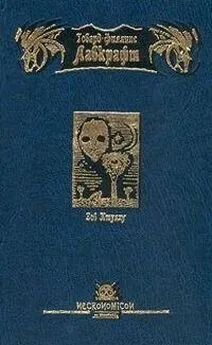
![Говард Лавкрафт - Сны Ктулху [сборник litres с оптимизированной обложкой]](/books/1082374/govard-lavkraft-sny-ktulhu-sbornik-litres-s-optim.webp)
![Говард Лавкрафт - Сны Ктулху [сборник litres]](/books/1082388/govard-lavkraft-sny-ktulhu-sbornik-litres.webp)
![Говард Лавкрафт - Миры Ктулху [сборник, litres]](/books/1092260/govard-lavkraft-miry-ktulhu-sbornik-litres.webp)
